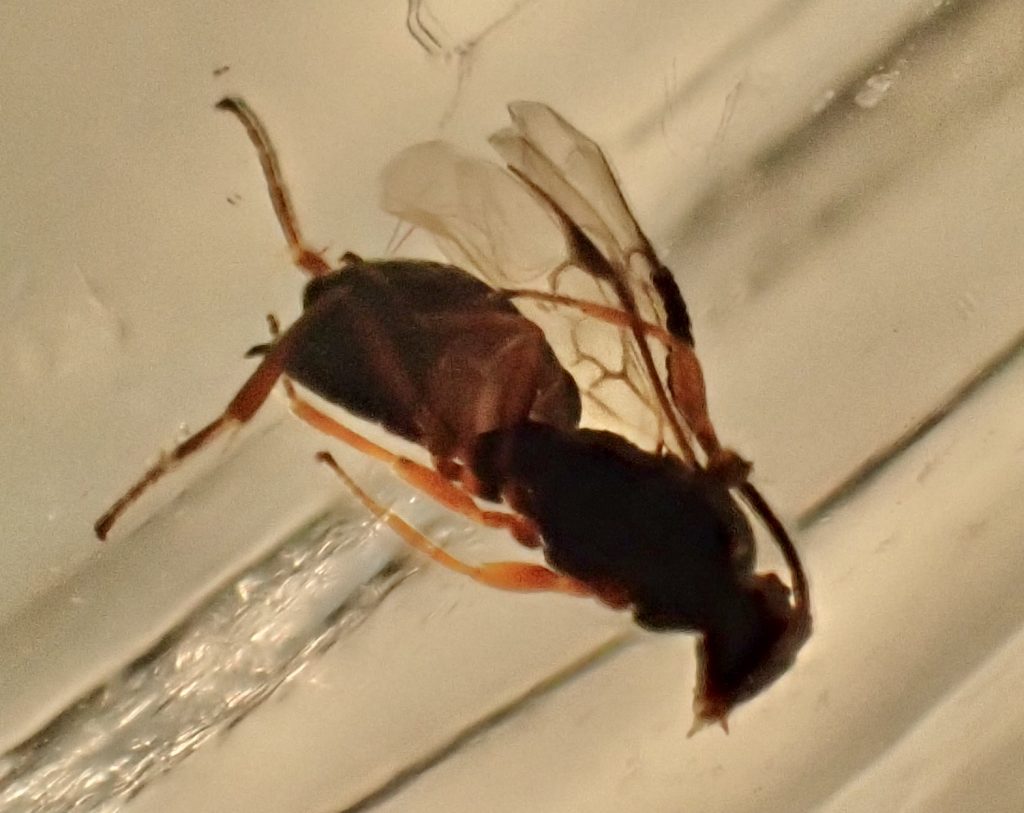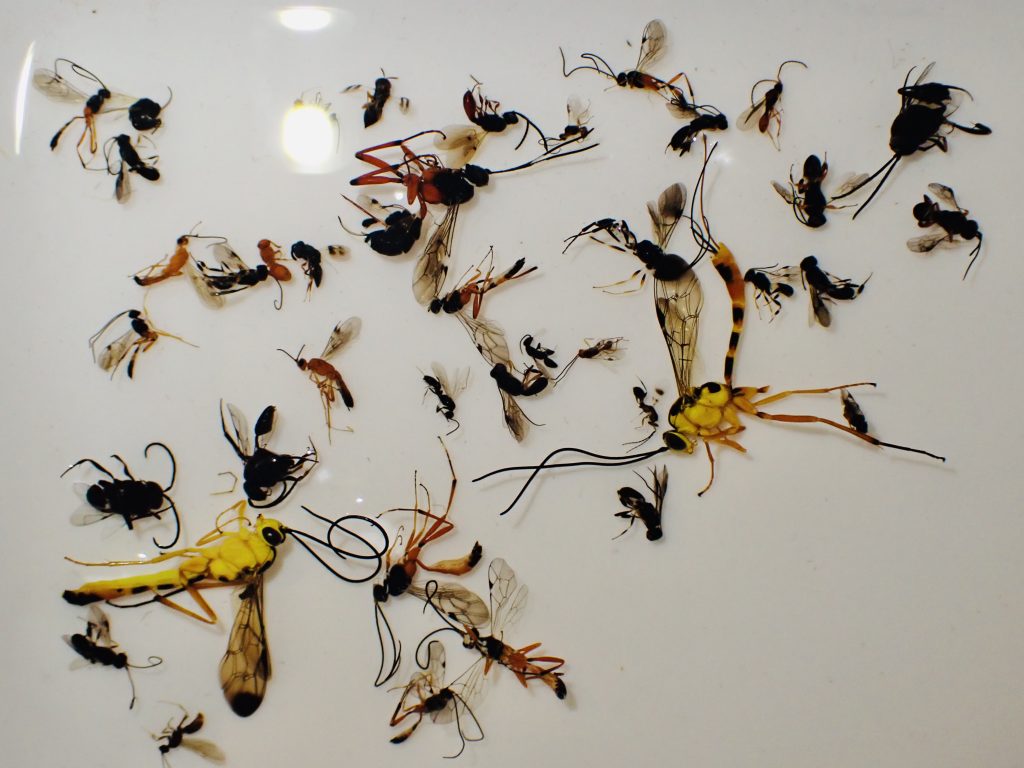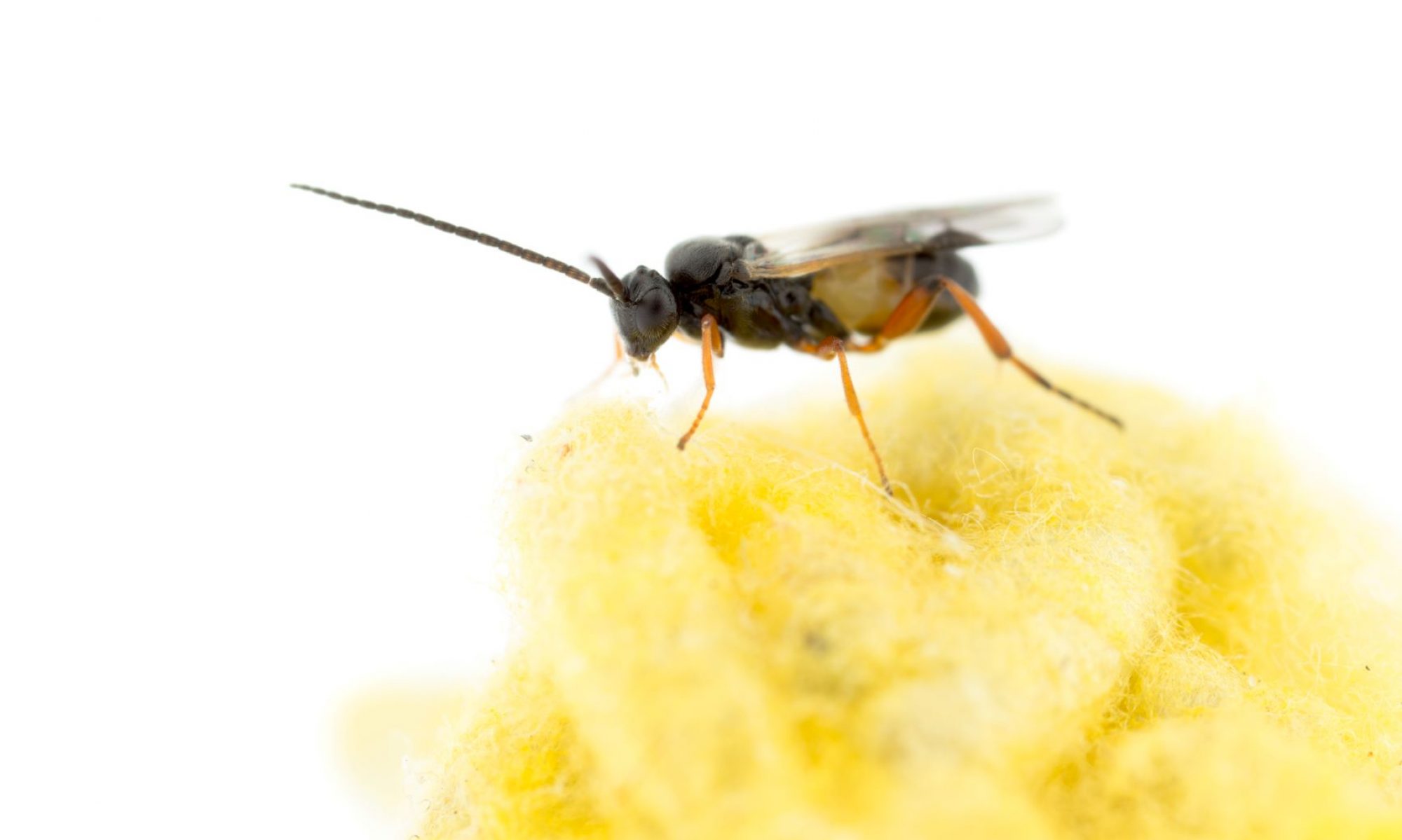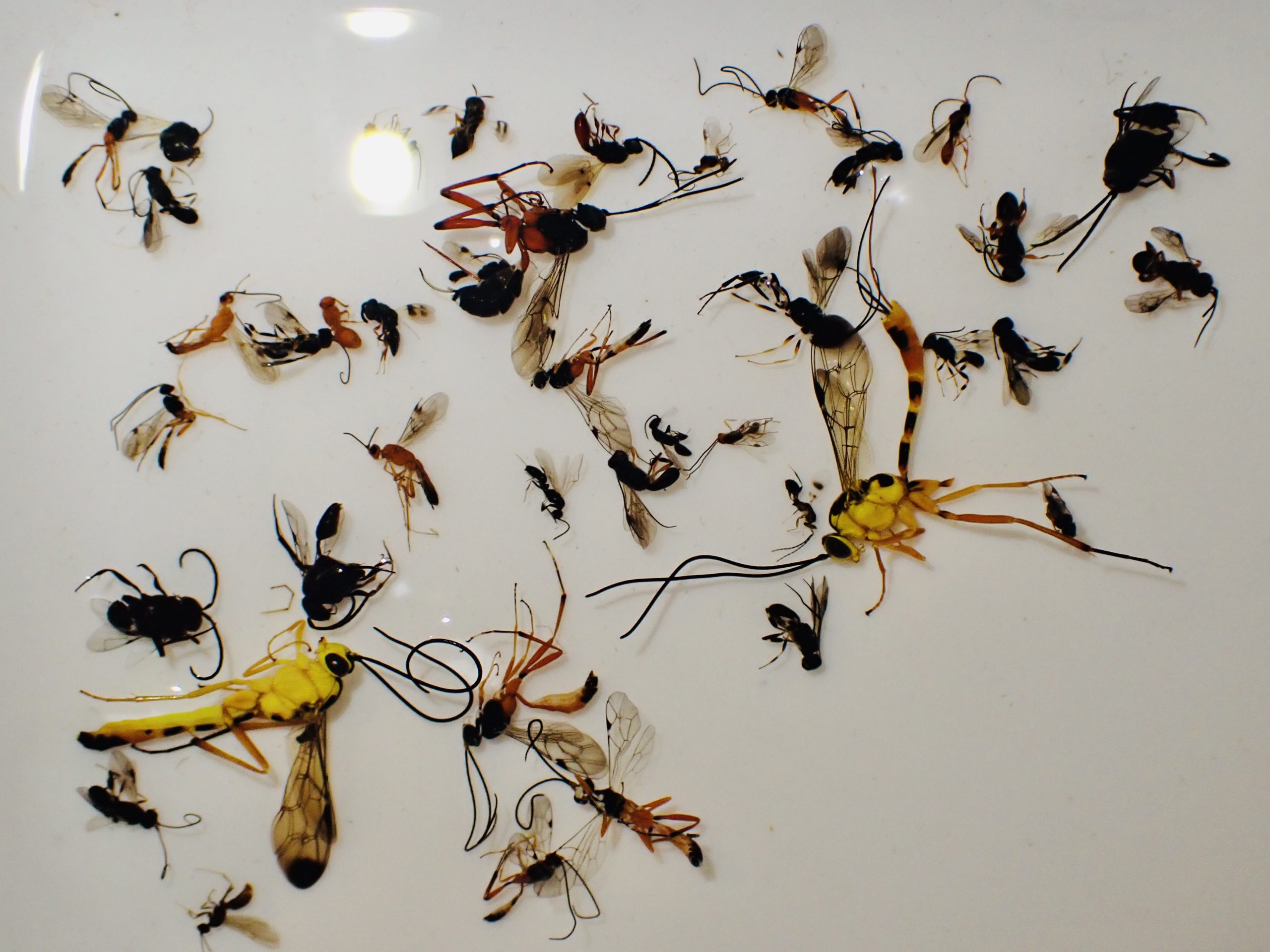Hi YETies and students at Waikerie Primary! I just finished sorting another one of your traps, this one was up between the 18 – 31 March.
Most exciting news first – you caught a Microgastrinae! These are the wasps I am studying and am working on discovering and describing new species of. The wasp you caught is a female, which is great as what the ovipositor looks like is important for working out what genus of wasp it is (the ovipositor is the appendage at the end of the abdomen, like a modified stinger which the wasp uses to lay her eggs inside caterpillars).

All microgastrine wasps lay their eggs inside caterpillars, and the baby wasps eat the caterpillars from the inside out!
The microgastrine you caught is in the genus Cotesia, but I won’t know if it’s a new species until after we do some DNA analysis and I have a closer look at the specimen. Keep up the good work team!

There were lots of other really cool insects in the trap this fortnight – I took a photo above just before I started picking out all the really tiny things so that you can see how many different species of insect you caught. You can see that there are lots of midges (the browny-yellow and the black flies in the middle) but also lots of other sorts of flies, several species of ants, and at least 20 different species of parasitic wasp – see below!


The black wasp in the bottom left hand corner of the picture above, with the really skinny bit between the thorax and abdomen, is in the family Evaniidae

Evaniidae wasps lay their eggs inside cockroach egg cases, and the baby wasp larvae eat the cockroach eggs.
I will try to get your other sample (that you posted with this one) sorted soon! Thanks again for all your hard work!

